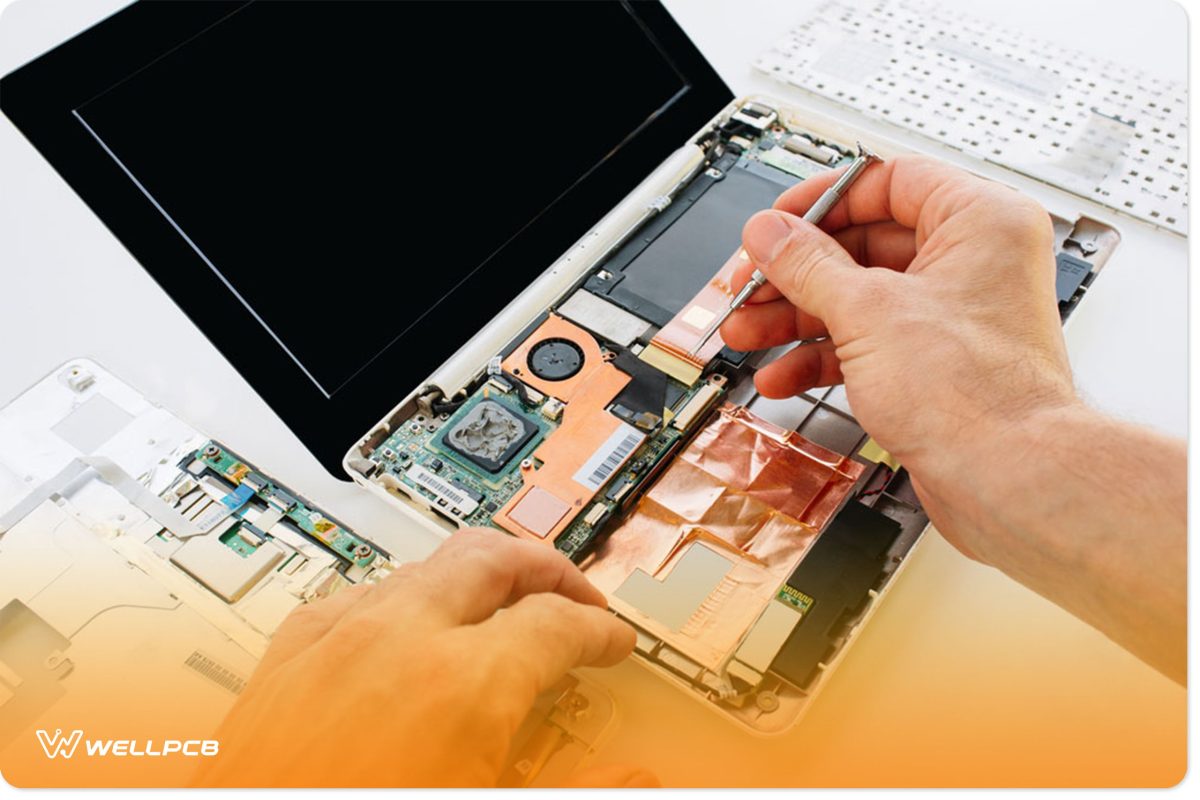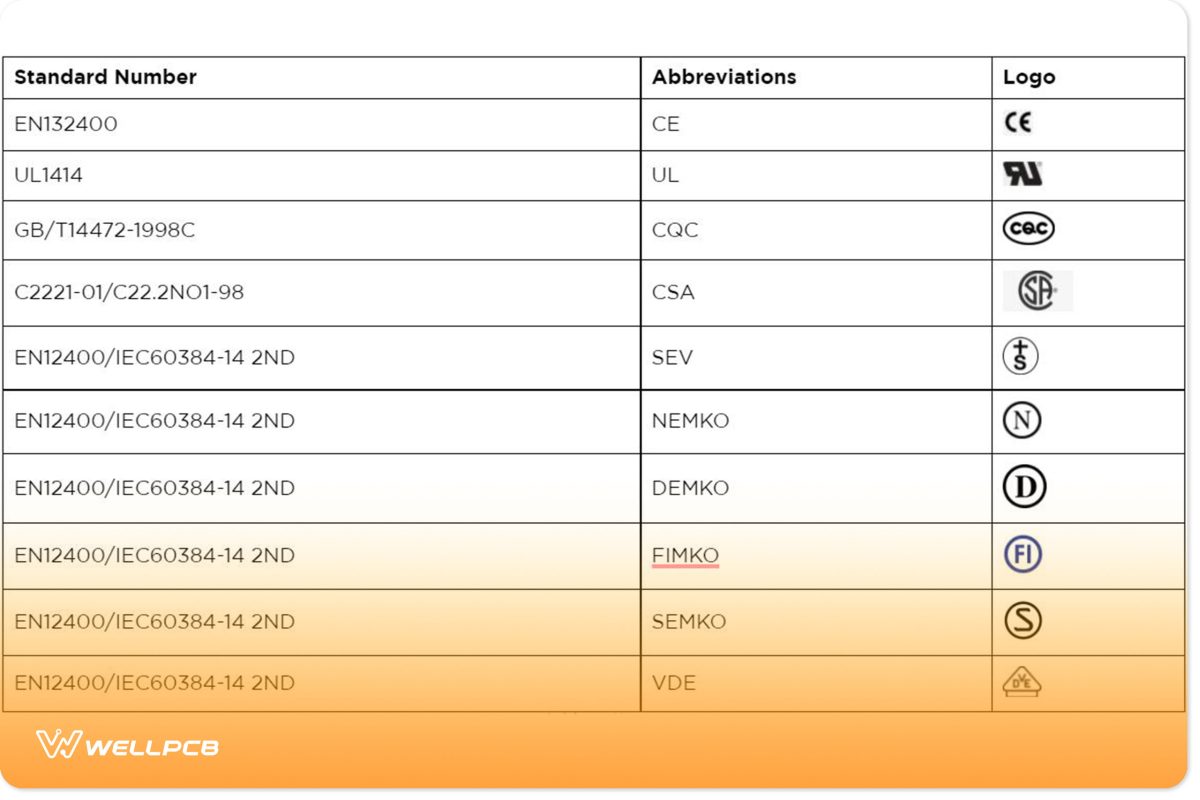Contents
What Are X-Rated Capacitors?
The X-rated capacitors are non-polarized electronic devices. And they behave like breakdown voltage transformers. Hence, they help step down high-volt AC to Low-volt AC in electronic circuits. Since these industrial capacitors are unpolarized, you can connect them in all directions.
Features and Specifications of the Rated Capacitor
Features of the X-rated capacitor include:
- The capacitor has a self-healing feature
- Comes with an epoxy coating.
- It is RoHS directive-compliant
- Remarkable electrical characteristics above a normal capacitor
- The device has a metalized polyester film
Also, the specifications of the X-rated capacitor include:
- The rated voltage is 250 VDC, 1000 VDC, 400 VDC, 100 VDC, 1250 VDC, 630 VDC, And the lowering rated voltage at 1.25%/0C at over 850C is 250 VAC, 125 VAC, etc.
- A capacitance range of 0.0010µF to 10µF (E12)
- The category temperature range for -100VDC, 250 VDC, 400 VDC, 630 VDC, 1000 VDC, and 1250 VDC is -400C to +1050. These values include temperature rise on a unit surface。
- Capacitance tolerance of ±10% (K), ±5% (J)
- It has a category temperature range of -125 VAC, 250 VAC is -400C to +850C
- The withstand voltage includes:
Amidst terminals: rated voltage (VAC) x 230 % 60 s
Terminals to enclosure: 1500 VAC 60 s
Connecting terminals to enclosure: 1500 VAC 60 s
Evaluated volt. 125 VAC, 250 VAC
Evaluated voltage 1000 VDC, 1250 VDC
Amid terminals: rated voltage (VDC) x 175% 2 s to 5 s 0r 1000 VAC
Evaluated voltage 100V to 630 VDC
Among terminals: rated voltage (VDC) x 150% 60 s
Rating of Class-X and Class-Y Capacitors
Class-X and Class-Y are special main supply capacitors. These capacitors meet the safety-certified American standards and European standards. Also, you can use them to filter AC lines in different electronic devices.
Further, you can also call the Class-X electromagnetic interference and radio-frequency interference suppression capacitors. Or you can call it EMI/RFI suppression capacitors—where the RFI has a higher frequency capacitor value than the EMI.
That said, you can also call the Class-Y an AC line filter safety capacitor. Further, both special-class capacitors reduce the production of EMI/RFI and the adverse effects related to the received resonance frequency.
Before these capacitors can execute their EMI/RFI filtering, you need to connect them directly to an AC load power input. Consequently, it may subject the capacitors to voltage transients and overvoltage like power surges. So, the capacitor may fail.
What Happens After Connecting the Capacitors?
When you put the Class-X capacitor (across-the-line capacitor) between the line and neutral, it may fail short. This may occur due to an overvoltage. Also, the failure will open an overcurrent supply voltage device like a circuit breaker or fuse. As a result, you may not experience electrical shock hazards—even if the capacitor fails.
In addition, when you put the line to the ground capacitor or Class-Y capacitor between the bar and ground, it may fail short. Consequently, a fatal electric shock will occur because of the lost ground connection.
But that’s an issue because manufacturers design this capacitor to fail open. And the capacitor will quickly filter out any noise and interference that your device may have due to a failure. Also, you won’t have an electric shock hazard.
That said, you can classify the Class-X and Class-Y capacitors based on:
- The peak impulse voltage that is easier for them to resist
- Their peak voltage or rated peak pulse voltage
The table summarizes the classification of the capacitors:
| Subclass (IEC 60384-14) | Peak Impulse Before The Endurance Test | Peak Voltage Pulse (In Operation) |
| X1 | 4kV per C ≤ 1µF4/√C kV per C ≤ 1µF | >2.5kV≤4.0kV |
| X2 | 2.5 kV per C ≤ 1µF2.5/√C kV per C >1µF | ≤2.5kV |
| X3 | <1.2kV | Nil |
| Subclass (IEC 60384-14) | Peak Impulse Before The Endurance Test | Rated Voltage |
| Y1 | 8kV | ≤500VAC |
| Y2 | 5kV | 150VAC≤ V <300VAC |
| Y3 | Nil | 150VAC≤ V <250VAC |
| Y4 | 2.5kV | <150VAC |
How to Utilize an X-Rated Capacitor In a Transformerless Power Supply
Since the X-rated capacitors have high voltage ratings, you can directly connect them to the AC mains in series. Interestingly, the X-rated capacitor voltage lowering capacitor is the critical part of a transformerless power supply circuit.
So, you can connect the X-rated capacitor with the Phase line of AC in series to lower the current. Then, you can replace the transformer with dropping capacitors. With that, you can use a bridge rectifier to change the drop-down AC signal to a DC signal with extreme caution.
This setup also has a Zener diode (1N4733A 5.1V). The device helps to produce DC output. Then, the Smoothing ideal Capacitor (5.0µF/6VDC) helps create DC discrete capacitors without ripples. And there there’s that will show you the DC output.
That said, it visits pick your voltage-lowering capacitor based on two things: first, Second, the required voltage that your circuit can withdraw.
And you can use the formula below to calculate the city’s nice:
Xc = 1/2πfC
Where:
- F = frequency of AC
- C = capacitance of X-rated capacitor
- Xc = reactance of a capacitor
So, if you use a frequency of 60Hz and a capacitor of 0.50µF, the reactance is:
Xc = 1/2 x 3.14 x 60 x 0.50 x 10ˆ-6 = 5307.86Ω
If your volt is 560, you can calculate your current
I = E/Xc = 560volts/5307.86Ω = 0.105 amps
Important things to note:
- The transformer-less power supply capacitor families are ideal for compact circuits with lesser current ratings.
- Since the circuit involves direct AC voltage handling, it’s essential to take precautions, especially against occasional voltage spikes.
- Insulate your AC output voltage wires.
- Avoid replacing the X-rated capacitors that have common capacitors.
Applications
You can use the X-rated capacitor for the following:
- Transformerless power supply
- Capacitive power supply
- LED lighting
- Laptops

Laptop Board
- Printers

Printers
Safety Approval Logo Markings
Proper symbols or markings are necessary for all safety-certified capacitors, suppression, and bypass capacitors. You can find the safety approval logo markings on the capacitor’s table that shows the safety markings and definitions:

FAQs
How does an X capacitor work?
The X capacitor works by connecting to the AC power line directly. While at it, the capacitor resists voltage spikes that may come with the power line. Then, if it fails, it will fail safely as an open circuit.
What are X and Y caps?
These are safety capacitors. The X capacitors remove the differential mode. This happens when you connect the device across the input line. The Y2 capacitors help remove the ordinary diode. Also, this happens when you place the Y2 safety capacitors between the input and ground line.
How are capacitors rated?
You can rate different capacitors by comparing their actual values and nominal capacitance to know the closeness. Then, you can indicate the exact tolerance with colored bands and letters.
Final Words
The X-rated integrated capacitors are the perfect go-to if you plan to execute EMI/RFI filtering. But before you get one, it’s vital to pay attention to the tasty approval logo markings. That way, you’ll be sure of what you’re using.
Have you used an X-r you’re capacitor before? Or do you need help getting the best one for your application? Please feel free to reach us.





